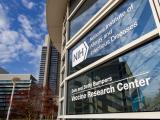Aug 3, 2012 (CIDRAP News) – A detailed expert assessment of what it would take for the nation to improve its resilience to natural disasters, infectious disease outbreaks, and other emergencies by 2030 found that although the goal is big and wide ranging, a national vision centered on measurable short-term goals could make a big difference.
The report and recommendations come from a National Academies committee that released its findings on Aug 1, ironically amid dramatic news headlines of a massive power failure in India that left 670 million people without electricity, some for as long as 2 days.
India's energy emergency prompted a preparedness reminder in the United States from the US Centers for Disease Control and Prevention (CDC). In a blog post, the CDC warned that it doesn't take much to cause a power outage and that even minor ones can cause notable problems. "Having things like flashlights, extra batteries, a first aid kit, battery-powered radio and additional food and water will come in handy for these situations," the CDC wrote, urging the public to keep coolers at home to store freezer items during outages.
The resilience report was sponsored by nine government agencies, ranging from the US Army Corps of Engineers to the Oak Ridge National Laboratory's Community and Regional Resilience Institute. A 13-member expert group convened by the National Academies' Committee on Science, Engineering, and Public Policy took on the task and was chaired by Susan Cutter, PhD, who directs the Hazards and Vulnerability Research Institute at the University of South Carolina.
The panel's findings are detailed in a 217-page report that appears on the National Academies' Web site.
Cutter said in a National Academies press release that the financial cost and burden to society that disasters cause will continue to rise without innovations to improve resilience. "Enhancing our resilience to disasters is imperative for the stability, progress, and well-being of the nation."
As the group prepared its findings, open meetings were held in three locations: New Orleans and the Mississippi Gulf Coast; Cedar Rapids and Iowa City, Iowa; and Southern California. Members also took trips to local communities to collect information on their disaster challenges and successes.
In 2011 alone, the cost of natural disasters in the United States exceeded $55 billion, with 14 events each causing more than $1 billion in damages, according to the report.
The committee wrote that improving resilience isn't the responsibility of any one federal agency and that it can't be articulated by one single policy. Rather, all government levels should be guided by a set of principles and best practices that push the concept forward. Their analysis found gaps within federal agencies, such as ineffective coordination of roles and responsibilities, and they call for agencies to analyze and share their key resilience programs and for the executive branch to develop a clear national vision and framework.
Chapters of the report present an in-depth look at risk management, resilience investments, measuring progress, building local capacity, policy issues, and linking communities and government.
Although disaster risks and conditions vary by location, communities can take standard steps to improve their resilience, such as adopting and enforcing building codes that reflect local hazards, building dams and levees, and reinforcing critical structures, the report says. It asserts that long-term investments to boost resilience need to come from both the public and private sectors.
The panel urged the Department of Homeland Security, with other partners, to develop a national resilience scorecard to help communities gauge how well their critical infrastructure can withstand and recover from events such as earthquakes and floods. Also, the group said that a more consistent hazard assessment is needed and that a centrally available disaster-loss data repository would help jurisdictions make better-informed decisions about investments.
The National Academies committee is planning an October 2012 event in Washington, DC, to hold a broader discussion about implementing the recommendations and will host regional events in 2013 that will aim to include participants from all levels of government, community and nonprofit organizations, the private sector, the research community, and the public, according to the press release.
See also:
Aug 1 National Academies press release
National Academies report "Disaster Preparedness: A National Imperative"
Aug 2 CDC blog post regarding India blackout



















